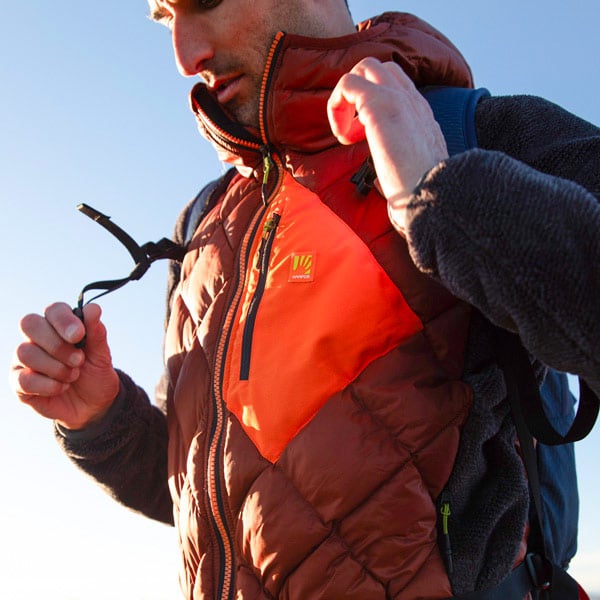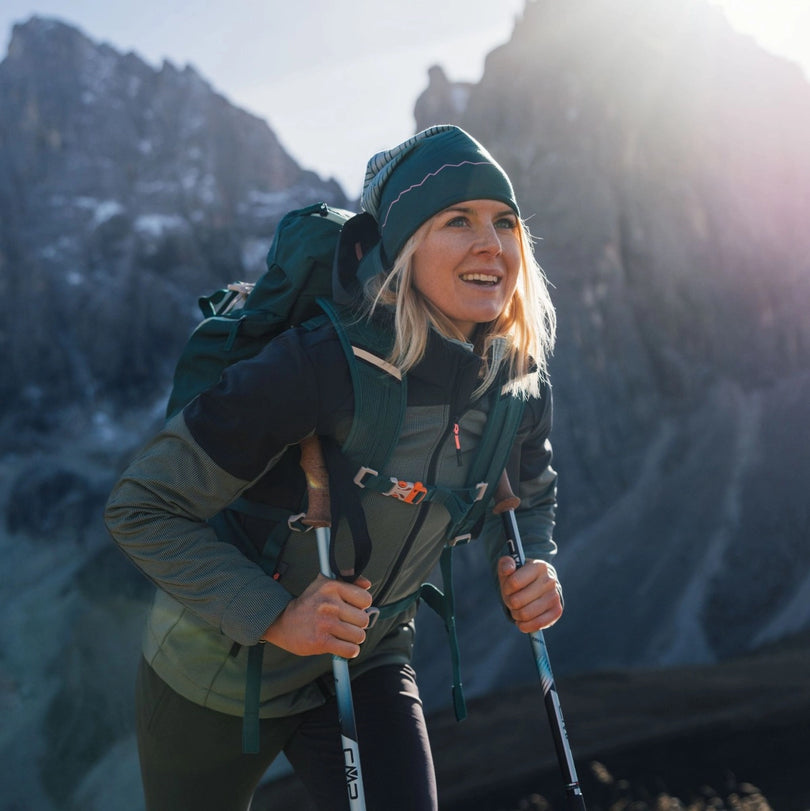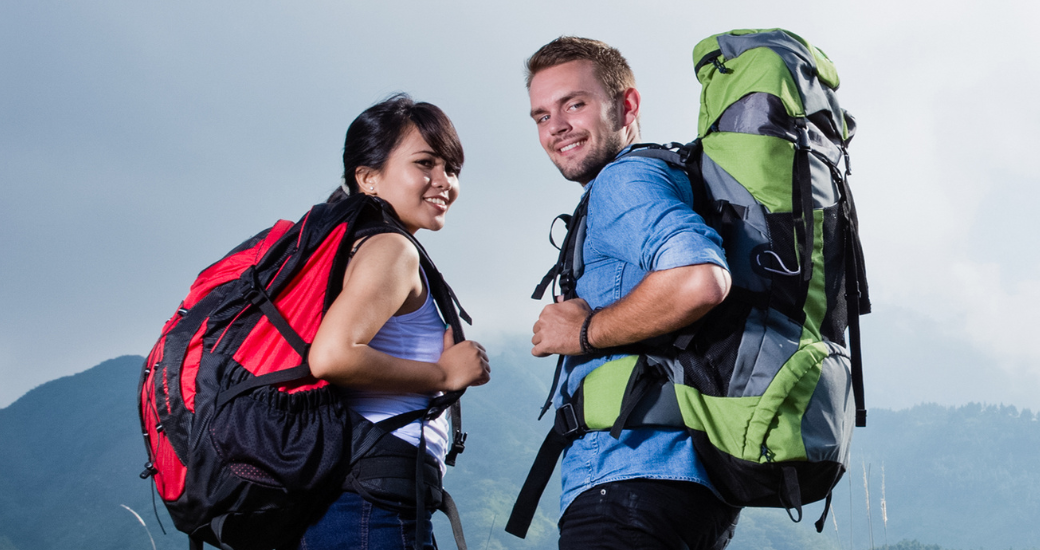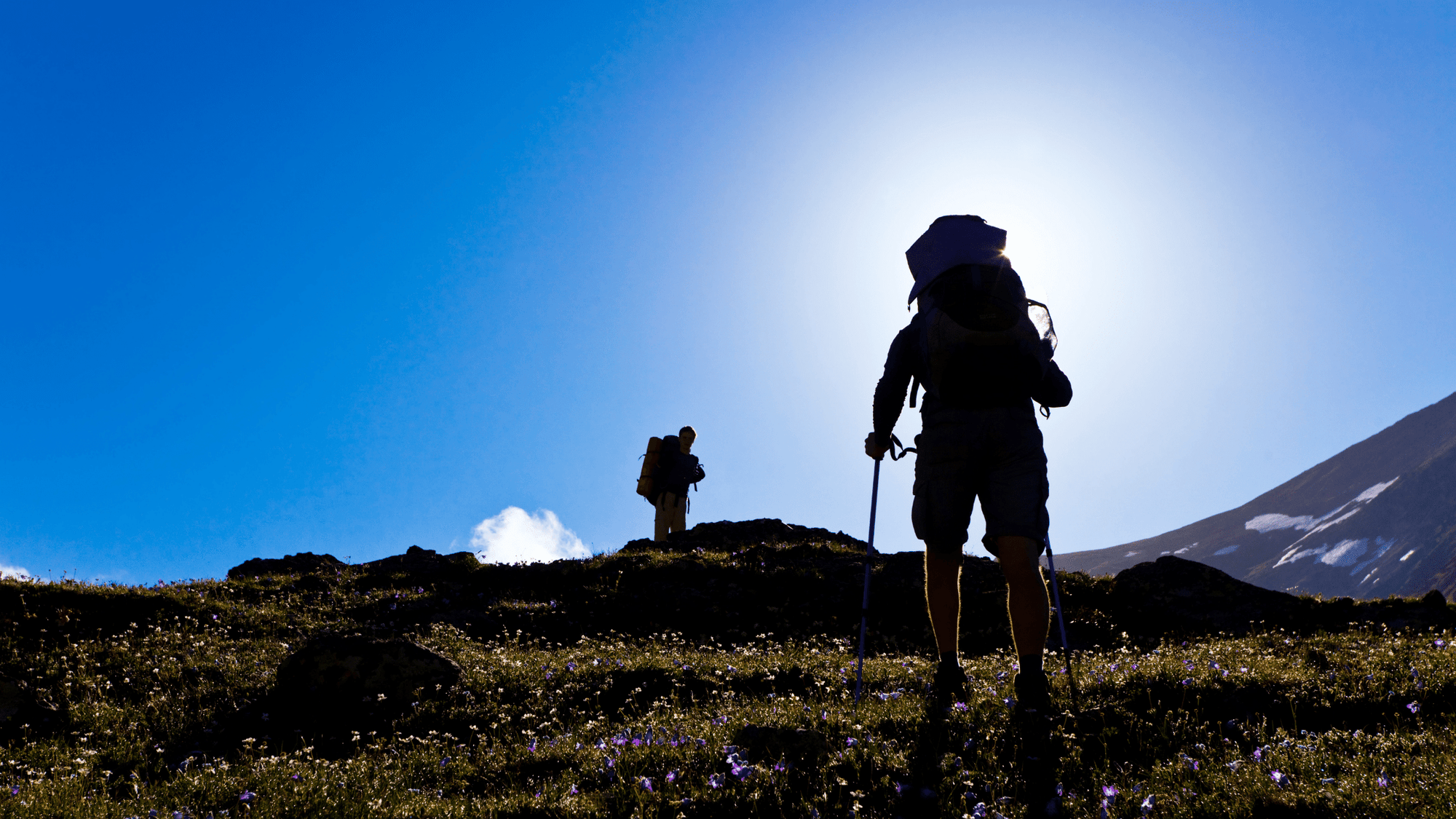Are you looking for your first pair of hiking boots ? Are the soles of the shoes you used so far worn out ? In this article you will find our tips to help you choose the right pair of shoes for you . The trekking shoe is not synonymous with uncomfortable and heavy shoe. In fact, the right pair of shoes will allow you to enjoy the view and get to the bottom without blisters and sore feet!

What kind of excursion are you planning to do?
This is the first question you need to ask yourself when choosing a hiking shoe. By " type of excursion " we mean:
- On that soil type will you walk
- How heavy will your backpack be?
- How long you will walk and at what pace?
Type of terrain
In general, when it comes to hiking, we can identify 3 types of terrain:
- Simple paths : valley bottom, plain or wide open spaces of another type. The surface of this soil is stable and even, with some slight differences in height.
- Uneven trails : this technical terrain it is typical of the mountain or hilly environments. You will have to watch out for rocks, roots and mud. Steps, sloping paths and steep terrain will put a strain on your legs and ankles.
- Off the trail : the ground is uneven, often unstable with the presence of loose stones and with paths usually not reported. This type of terrain requires extreme concentration to move efficiently. You may have to overcome obstacles, cross streams and help you with your hands for some stretches. A land where you can embark on real adventures!
On simple paths , one flexible shoe promotes the natural movement of the foot. Self lightweight , it will also be comfortable to wear and reduce the feeling of fatigue. Cushioning is added comfort, but it's less important than in a trail running shoe.
The more technical the terrain therefore , plus the sole of the shoe should be rigid to ensure greater stability. A tallest shoe protects and supports the ankle. I r reinforce (lateral rubber and paramelleolo) and a thicker sole, they increase the duration of your hiking shoes, but they make them heavier.
There water resistance of your shoes will be affected by the weather. A waterproof membrane, like Gore Tex, protects the foot from moisture but makes the shoe less breathable.
In dry weather or high temperatures, a Gore-Tex shoe can create too much heat and therefore excessive sweating. It is not necessarily necessary to opt for a waterproof membrane. A leather shoe is a good alternative, despite being heavier, because it offers protection and breathability at the same time.
The weight of your backpack
It may seem strange to you, but the weight of your backpack will have an impact on the choice of hiking shoes. The choice will also depend on how far the arrival point of your excursion is and how long you plan to walk. We advise you to try to keep your backpack as light as possible, loading it only with the bare essentials .
One lightweight backpack it is less tiring and more agile to carry, even for a prolonged time, and reduces the risk of any injuries and pains. You can therefore choose a lightweight and flexible hiking shoe, if the terrain allows.
If you have to bring a tent, stove and food, you should opt for sturdier shoes for extra stability. A high shoe will provide extra support in case of weak ankles or if the terrain is technical.
Read this article and find out how to prepare the trekking backpack
The duration and pace of your excursion
The concept of the duration of an excursion is relative. A one-hour hike on a simple track won't exhaust you like spending an hour on unstable rocks.
Just ask yourself if your goal seems "short" or "long" to you, so choose lightweight shoes with greater flexibility or shoes that offer stability and support.
Finally, if you use your hiking shoes a lot , look for shoes reinforced with thick soles in so that they last longer.
What is my level of preparation?
To identify your level, ask yourself these questions clearly and honestly:
- How often do I go hiking?
- How much Do I have experience in hiking?
- On what types of terrain I walk?
Your level will help you choose the most suitable shoes, both with good ankle support and lighter shoes (lower and with less reinforcements for freer ankle movement).
What is my physical condition?
Evaluate your level of training objectively.
An example: you have been hiking for a few months, you do not have still a lot of experience , but stay progressing rapidly Why go hiking regularly . The excursions you take are more and more ambitious and technical. It is not you never happened to twist your ankle during a hike and you are in good physical shape because you like to practice other endurance sports.
In this case then choose one low and light shoe, which will guarantee a freer movement of the foot.
Another example: you are an experienced hiker and have been hiking on mountain trails for several years, but a sprained ankle forced you to take a few months' break. Were you used to using flat shoes? If the answer is Yes, then your shoes are not providing the necessary support for your ankle right now.
So choose high, stable shoes that will provide support for your ankles. Once you are fit again, you can go back to wearing your old shoes.
Characteristics of trekking shoes
After evaluating your level of preparation, you need to decide which characteristics are important to you.
-Sturdy shoes
A shoe rigid and robust offers stability on technical terrain.
A shoe flexible follows the movement of the foot and guarantees optimal freedom of movement if the foot rests on the ground in the right way.
-High or low shoes
A tallest shoe supports the ankle.
A low shoe allows the ankle to move more freely
There are also mid shoes , halfway between a high and a low shoe, which reach up to the malleolus.
A pair of shoes with reinforcements , as we have already mentioned, offers additional protection and lasts longer , whether you are walking on steep and rocky terrain or off the trail. A thicker sole protects the soles of the feet.
Attention! A shoe ultralight reduces fatigue, but it does not offer the same duration.
Try on your hiking shoes

Now that you have assessed your level of preparation and identified, among all the brands and models available, which is the most suitable type of shoe for you. Before buying your shoes, in a specialized shop or on the internet, like the one you are reading this article in , you have to try them.
Start by wearing a good pair of hiking socks.
Regardless of the price, even when the shoes are new, you shouldn't feel no pressure point on the foot. The fit of the shoe must be adapted to the anatomy of your foot (not the other way around!). You need to be able to easily adjust the shoe without pulling the laces hard, whatever the lacing system.
How to choose the shoe size?
- Wearing hiking socks, we recommend that you try different styles, preferably at the end of the day since the foot tends to swell a little.
- If you are undecided between two sizes, choose the larger one because your feet will swell during the hike. You can easily reduce the size of a shoe that is too large by adding an insole. Doing the opposite is not that simple!
Your training level changes according to the demands of everyday life . Only by constantly monitoring the frequency of your excursions will you be able to update your equipment accordingly ... starting from shoes !
Happy Trekking everyone!









